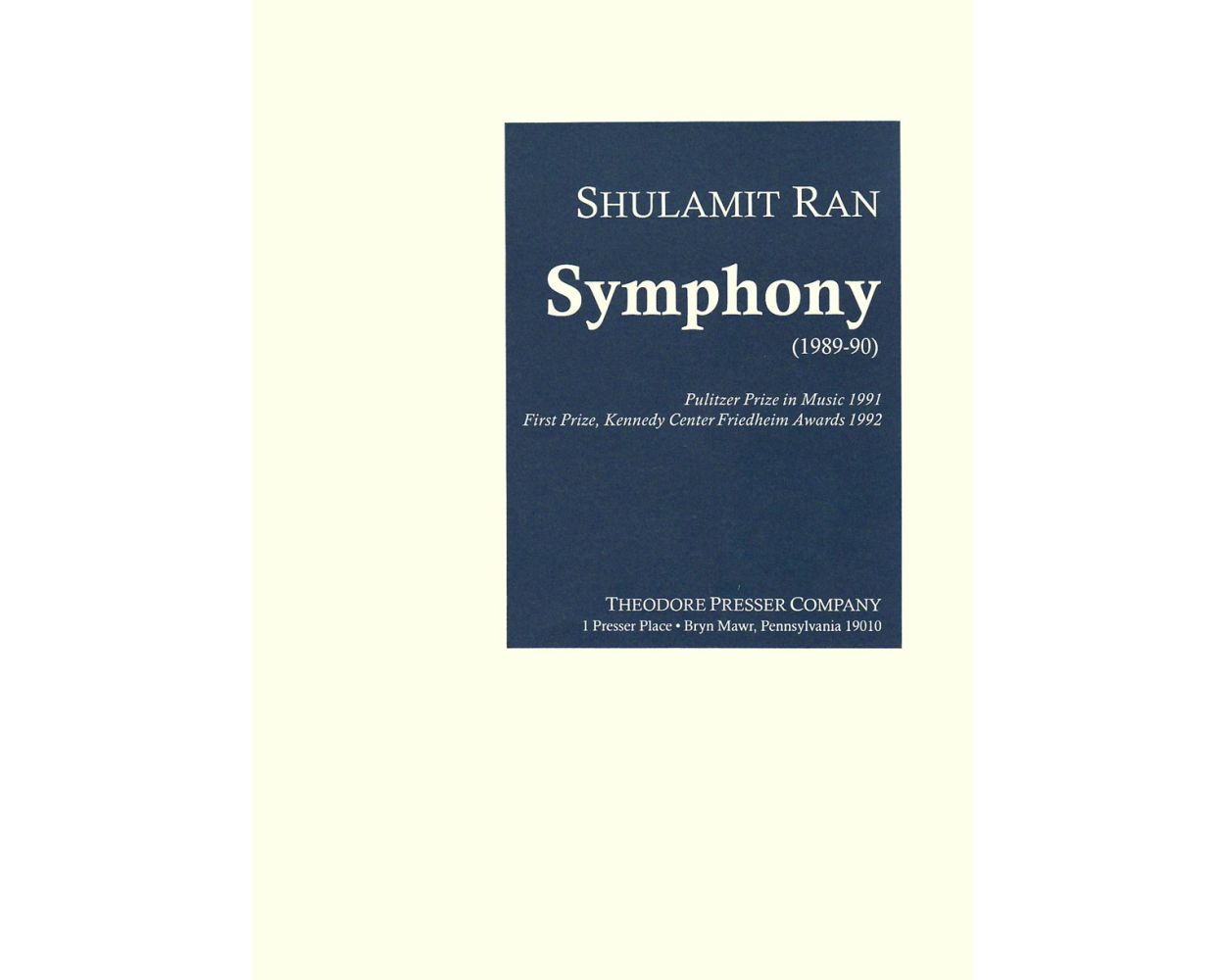Symphony (1989-90)
Shulamit Ran (composer)
$58.00
SKU
416-41126
Pulitzer Prize (1991)
First Place, Kennedy Center Friedheim Award (1992)
"As in the case with many of my works, but especially those of the last dozen years or so, most of the important ideas of the entire Symphony are clustered together early on in the first movement and are organically related. The spacious horn solo at the opening is the first major theme. Aspects of this theme are taken up in various guises at other important points. The leisurely dotted rhythm is taken up again in the slow, high violin melody which later becomes Movement II?s principal theme. A brief, slow, majestic woodwinds and brass chorale is set to act as would-be consequent to the aforementioned high violin melody. The chorale returns as a stately ostinato in the second half of the first movement, and later again in the latter part of the last movement The opening horn solo further introduces a simple, slow melodic turn which is embedded in a varied form into the stormy "appassionato" which immediately follows. The modified turn appears in a yet further expanded variation as part of a fanfare-like trumpet solo. Finally, the interval of the third with which the opening melody is replete is probably the most characteristic foreground-level block of the entire symphony.
Connections between movements abound. It is as though ideas appearing early on and having one kind of function are given new identity, taking on a new life as the work progresses. The slow, high violin melody which appears only once in its simple, original form in the first movement?suspending the previous intense motion while, at the same time, providing an antecedent to the woodwind/brass chorale?opens the second movement and is now much elaborated. The new development leads to a modified version of the theme which is treated in a quasi-fugal manner, eventually reaching its climax in a loosely structured mensuration canon in three voices. The other important element of the second movement is a muted trumpet idea which originated in the first movement, returning unaltered at first, but with further elaborations as the second movement unfolds.
The third movement surprises one, I think, in that its first half appears to have no obvious thematic relationships to the first two movements (except for retaining the low-level third connection). For a while, in fact, the last movement does not seem to be concerned with thematic processes as such, but with motion and texture. After a short opening flourish the movements proper begins with an obsessive, repeated-note figure, with varying groups of instruments entering and departing in overlapping patterns?like long beams of light forming different color patterns as they scan the landscape. In a formal sense it could perhaps be argued that the last movement acts as two movements in one, with a slow central section (recalling the solos of the second movement) separating the two. Yet there is also a gradual process of transformation here. The obsessive scherzo-like quality of the first part of the movement never actually ceases, it just evolves into something else. Eventually, the transformation of materials reaches a full circle, as earlier ideas are brought back in the symphony?s final, climactic moments. Most prominent among these are the percussion cadenza recalling parts of the first movement, the chorale/ostinato, and, finally, the opening melody now heard on all six horns as the dominant component of a much richer texture.
In recent years, I find myself progressively more drawn by the idea, and the ramifications, of a formal return in a piece of music yet, at the same time, moving onward. As in life, one can never go back in time. There is no such thing as a real recapitulation. What has happened in the intervening time has altered things irrevocably. Pitted against this reality is an equally compelling statement, namely, the more things change, the more they remain the same. The cyclical versus the inevitability of the flow of time are two major currents at the source of all of life and nature. Music, I believe, has the unique power to reconcile and be expressive of both.
My first symphony is dedicated to Ralph Shapey, my great colleague, friend, teacher." -- Shulamit
SKU: 416-41126
Duration: 34:00
Key: F major
Dedication: to Ralph Shapey
Commission Notice: Commissioned by the Philadelphia Orchestra, Riccardo Muti, Music Director. Funded by the Rivera-Price Music Foundation and the Rittenhouse Square Committee for the Philadelphia Orchestra.
Publisher: Theodore Presser Company
Delivery Method: Print
Score Type: Full Score
Product Type: Score
Weight: 0.95 lbs.
UPC: 6-80160-09103-4
Duration: 34:00
Key: F major
Dedication: to Ralph Shapey
Commission Notice: Commissioned by the Philadelphia Orchestra, Riccardo Muti, Music Director. Funded by the Rivera-Price Music Foundation and the Rittenhouse Square Committee for the Philadelphia Orchestra.
Publisher: Theodore Presser Company
Delivery Method: Print
Score Type: Full Score
Product Type: Score
Weight: 0.95 lbs.
UPC: 6-80160-09103-4
I.
II.
III.

